|
|
 |
|
|
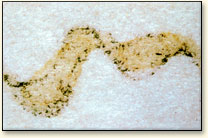
The ink lines appear to be composed of two parts, a yellowish line which strongly adheres via absorption to the parchment, and an apparently overlaid black line from which over 90% of the black pigment has flaked off. In some places the black has been almost entirely lost.

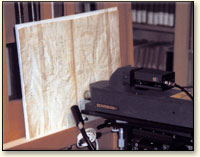
The map and manuscript were analyzed by Raman microprobe spectroscopy in 2001. The black ink gave rise to poorly defined, but characteristic Raman spectrum of carbon (India ink). The yellow coloring contains anatase.

|
|
Two inks were used in the 1400s, India ink (soot) and iron-gall (oak burls). India ink is stable, but iron-gall "rusts" to Fe2O3. Here, the ink has a yellow fringe, but analysis shows the ink is soot. The ignorant forger used India ink, and then added yellow pigment to make it look old.
Only iron-gall ink yellows with time, forming rust Fe2O3. Chemical analysis of the yellow pigment shows it is not rust, but synthetic anatase (TiO2). This anatase was first made in 1920. How could synthetic anatase be found on the map?
When manuscripts written with iron-gall ink age, iron ions leech from the iron gallotannate causing discoloration and embrittlement of both paper and parchment. However, the Vinland Map shows no evidence of embrittlement or parchment loss.
|
|
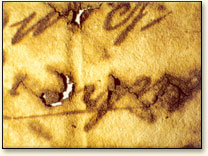 |
|
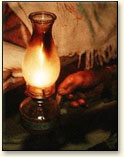 |
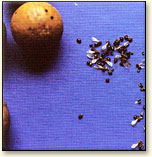 |
|
|
Typical damage in aged iron-gall manuscripts include brown or yellow staining and, sometimes losses
|
|
|
|
Lamp black is the oily soot that collects when a lamp burns without enough air.
|
|
Plant galls from the oak Quercus robus, dead wasps have emerged from the galls.
|
|
|
|
|
|
|
|
|
|
|
|
< Previous Next > |
 |
|
|
|